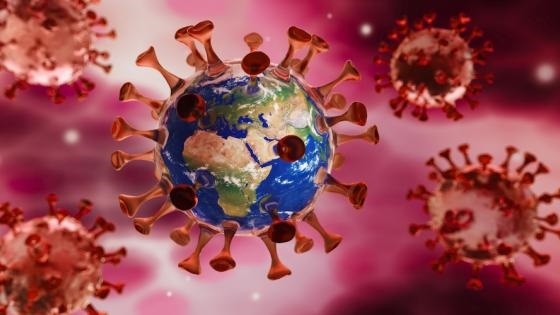Argentina and the Rest of Latin America Along with North America Reports Rising SARS-CoV-2 and Influenza Activity
Nikhil Prasad Fact checked by:Thailand Medical News Team Oct 28, 2025 3 hours, 41 minutes ago
Medical News: Ministry of Health has sounded a cautious alert as new data reveal an upward trend in COVID-19 and influenza cases while respiratory syncytial virus (RSV) infections are steadily tapering off. The findings were presented in the Boletín Epidemiológico Nacional No. 778 (Week 41, 2025) issued by the Directorate of Epidemiology under the Ministry of Health.
 Argentina and the Rest of Latin America Along with North America Reports Rising SARS-CoV-2 and
Argentina and the Rest of Latin America Along with North America Reports Rising SARS-CoV-2 and
Influenza Activity
Regional Situation of Respiratory Viruses
The Pan American Health Organization (PAHO) reported that across the Americas, respiratory infections remain active with varying intensity. Influenza activity is beginning to rise, particularly in the Southern Cone—Argentina, Brazil, and Chile—where influenza A (H1N1) predominates. RSV circulation, however, continues to drop region-wide after a midyear surge. Meanwhile, SARS-CoV-2 infections are showing a slight upward trend, with regional positivity rates hovering around 8.3%.
In North America, influenza activity remains low but stable, while COVID-19 positivity is increasing—reaching 10% in Canada and 8% in Mexico. The Caribbean is experiencing moderate influenza transmission, led by subtype A(H1N1)pdm09, and Central America is seeing mild growth in influenza B/Victoria circulation. In Argentina, mild rebounds of both influenza and COVID-19 have been recorded, aligning with similar patterns seen across the South American continent.
National Trends in Argentina
This
Medical News report highlights that between epidemiological weeks 1 and 40 of 2025, Argentina recorded 999,840 cases of influenza-like illness (ILI), 144,296 cases of pneumonia, and 133,397 cases of bronchiolitis in children under two years old. Both influenza and pneumonia showed outbreak-level activity during the first half of the year, with ILI notifications peaking between weeks 11 and 18. RSV infections rose sharply in midyear but have since stabilized, with national positivity rates surpassing 10% during their peak.
COVID-19 Positivity Rates and Trends
Surveillance data from Argentina’s Unidades de Monitoreo Ambulatorio (UMA) reveal that COVID-19 remains active but under control. Between weeks 1 and 41 of 2025, 5,048 molecular tests for SARS-CoV-2 were performed, of which 270 tested positive, reflecting a positivity rate of 5.35%. Though low compared to pandemic levels, the rate has shown a gradual increase since week 34, suggesting steady endemic circulation. In hospital settings, COVID-19 positivity among severe acute respiratory infection (SARI) cases remains under 6%, though admissions with confirmed infections have slightly risen in the last two months.
Compared to previous years, the 2025 data show COVID-19 behaving more like a seasonal respiratory virus, with periodic minor surges. Health officials emphasize that the virus continues to co-circulate with influenza and RSV, necessitating dual vaccination efforts, especially for vulnerable populations such as the elderly, healthcare workers, and those with chronic illnesses
.
Influenza and RSV Situation
Influenza surveillance shows that subtype A(H1N1) was the main driver of midyear outbreaks, peaking between epidemiological weeks 21 and 26, before declining toward September. Influenza B/Victoria now accounts for most new detections. From January to October 2025, 595 hospitalizations were linked to influenza A and 17 to influenza B.
RSV infections, which primarily affected infants and older adults, spiked earlier in the year—particularly between weeks 25 and 32—before falling sharply. Over 300 cases were detected in the latest reporting cycle, signaling the end of the RSV season.
Age Distribution and Clinical Impact
Analysis shows that influenza primarily affects adults aged 5 to 39 years and older adults, while COVID-19 cases are more evenly distributed among adults and the elderly. RSV, in contrast, continues to pose a serious risk to children under five and frail seniors. The Ministry of Health has urged continued community awareness and adherence to vaccination and hygiene measures to prevent hospital overload during overlapping viral waves.
Strengthening Public Health Response
The Ministry’s epidemiological experts stress that Argentina’s continued surveillance through the SNVS 2.0 (National Health Surveillance System) and sentinel networks allows for real-time tracking of respiratory pathogens. As SARS-CoV-2 stabilizes into endemicity, integrated monitoring of influenza, RSV, and COVID-19 is viewed as critical for anticipating hospital surges and refining vaccination schedules ahead of the 2026 season.
The Boletín Epidemiológico Nacional No. 778 (Week 41, 2025) report by the Argentine Ministry of Health’s Directorate of Epidemiology can be found here:
https://www.argentina.gob.ar/sites/default/files/2025/01/ben-778-se-41.pdf
For the latest COVID-19 news, keep on logging to Thailand
Medical News.
Read Also:
https://www.thailandmedical.news/articles/coronavirus
https://www.thailandmedical.news/articles/influenza-or-flu
